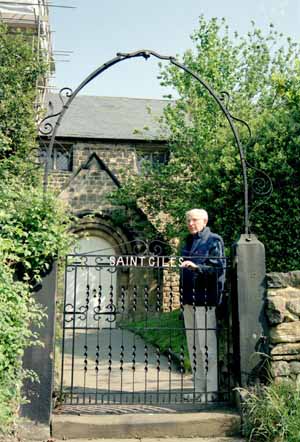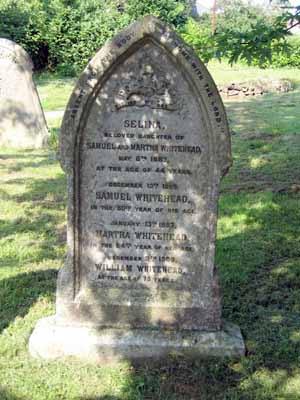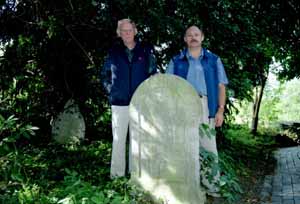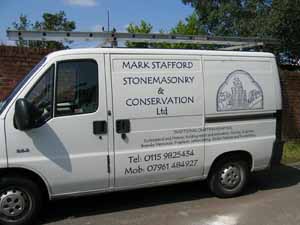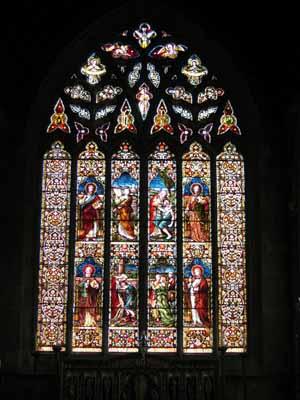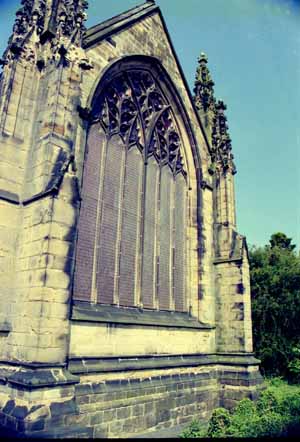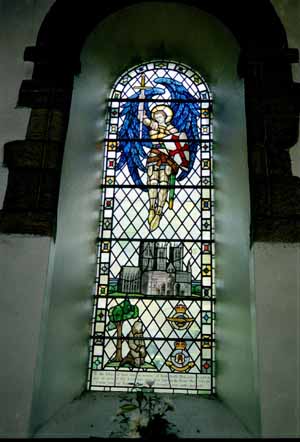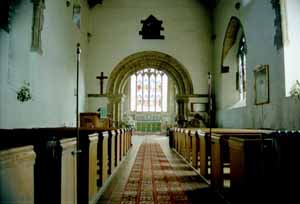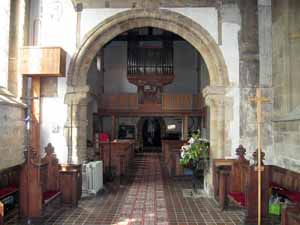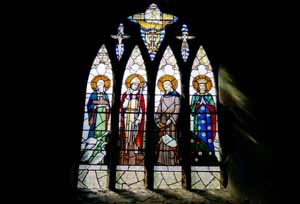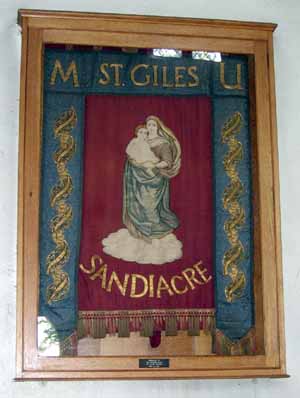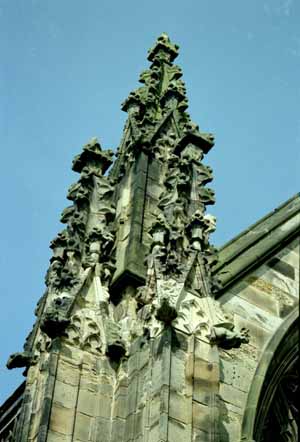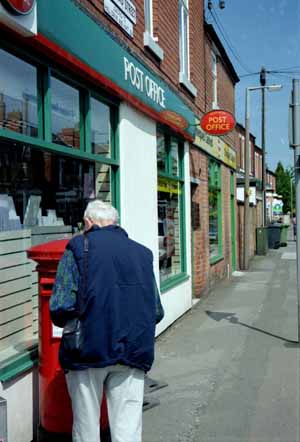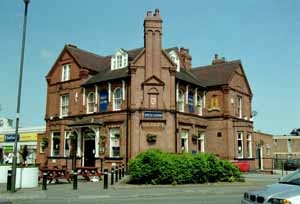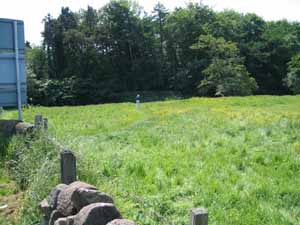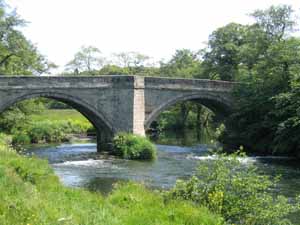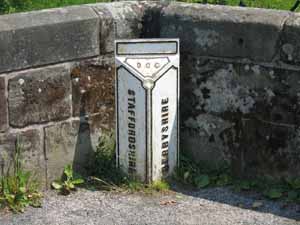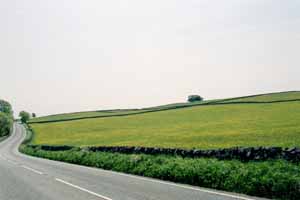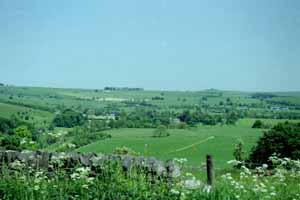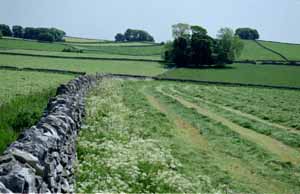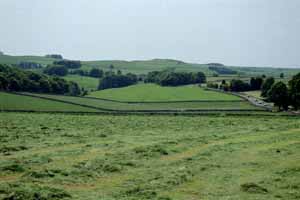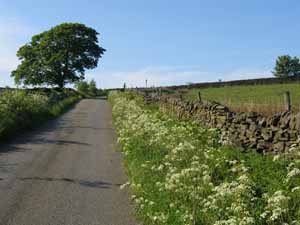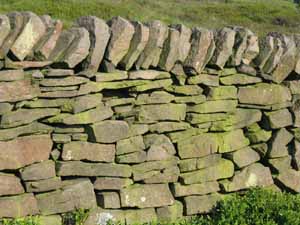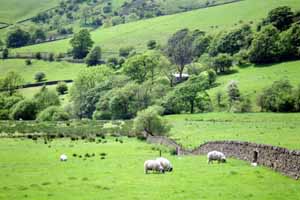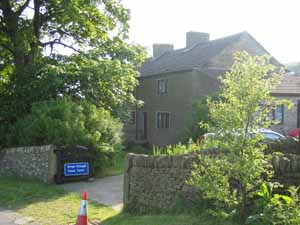DAY 3 Tuesday 7 June 2005St Giles ChurchAfter William Froggatt had married Sarah Goodliffe in Nottingham in 1867 they moved a few miles west to Sandiacre, a pleasant village beside the Erewash canal. Here William set up a timber business in Station Road, where the Derby Road crosses over the canal. William and Sarah had 6 children, 3 of whom died in infancy. William, James and Elizabeth all married, but only William had children (in Australia and New Zealand). The children were baptised at St Giles, Sandiacre and William and the three children (Joseph, Gertrude and Arnold George) are buried there. (More info on Sandiacre in 1868....) We visited St Giles, to find the church in the midst of restoration. The graveyard too had been tidied up and some of the trees cut back, but more pruning is needed. We found the graves of William and the two children, and were able to see inside the church. Parts of the building are very old, reputed to date from Saxon times, as a set of carved stone pews would suggest. Beside William's headstone we noted a stone for the Whitehead family. Although no relative to the Froggatts, William Whitehead does figure in our history. William Froggatt on his journeys to New Zealand retained only one possession, a book in French, given to him as a Christmas present in 1881 by William Whitehead. William is recorded in the 1881 census living in Church St Sandiacre, occupation "Tutor in Languages". Inside, we found St Giles to be a well-maintained church with some wonderful stained glass windows. The main window, behind the altar was of particular interest. Along the bottom panes is an inscription: "Dedicated to God and in Memory of Joseph Stevens who died June 17 1885 Erected by his loving sister Matilda" Joseph was aged 56 when he died. Matilda died in 1893, aged 59. Both are buried in the grounds of the church, immediately under the stained glass window. There is a brass plaque inside the church dedicating the peal of three bells in January 1881, the bells being donated by Joseph Stevens. My great-grandfather William Froggatt died in July 1881, so would have been present at the dedication. The 1883 Wright's Directory lists Joseph Stevens as "Lace Manufacturer". However the 1881 Census lists Joseph as a "framesmith" and living with his mother in Church St. In 1871 he was a blacksmith living in Town St. In 1861 he was a blacksmith at the same address living with his parents (John & Elizabeth). His father was a cotton lace maker.
SandiacreFrom the Church we drove into Sandiacre, posted letters at the local Post Office then walked over the Derby Road bridge to Station Rd where William Froggatt had his timber yard beside the canal. We returned to Derby Road, bought filled rolls for lunch at the local take-away shop then headed northwest to Ashbourne.
Ashbourne & CliftonWe walked around the main street of Ashbourne, examining the local butchers and bakers before driving south to Clifton. It was from this small village that James Froggatt departed in about 1770 as he presumably went looking for work. He ended up at Brewhouse Yard in Nottingham some time before 1798. Just south of Clifton we found a layby beside the Dove River and decided this was a nice place for lunch. We ate our ham rolls from Sandiacre, and make a cup of tea from the Thermos I had packed - the first good cup of tea in nearly 3 weeks.
GlossopFrom Clifton we headed north to Buxton, then on to Glossop. The road took us through many miles of Derbyshire farmland, past paddocks of grass and buttercups, but surprisingly few cattle or sheep.
It was a warm sunny afternoon so we asked at the Glossop Visitor's Centre about B&B farmstays in the area. They booked one for us a few miles south, so we drove back, turned down the narrow lanes and found Kings Clough Farm. It was a pleasant place in rural Derbyshire.
Back to previous day Last updated: 25/06/2017 |
